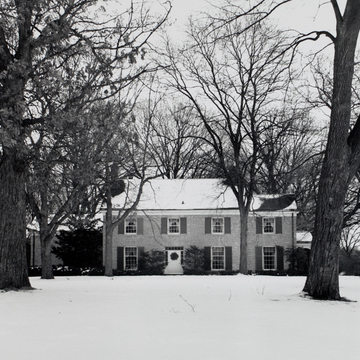The Robert Armstrong house has often been cited as an example of Iowa's own regional version of the Colonial Revival style. It was modeled after the Eugene Doe house (1860) in Waubek, a house that carried on the very late Federal tradition. The architect, Bruce
Notes
Joan Liffring-Zug, “The Armstrong House,” 35.
Liffring-Zug, “Armstrong House,” 34.














